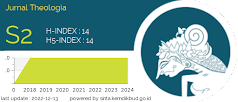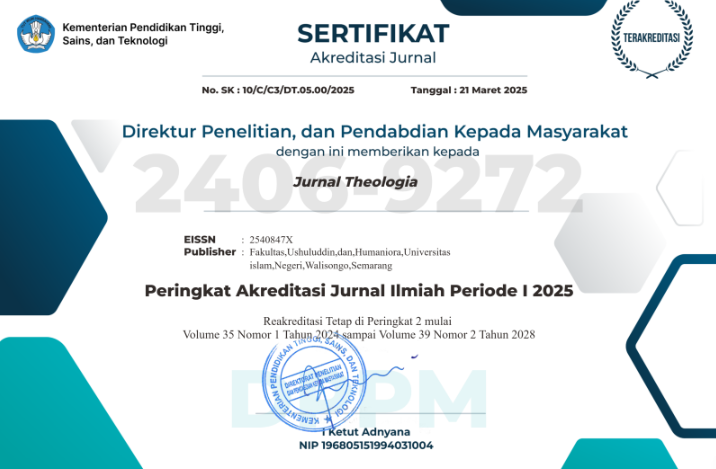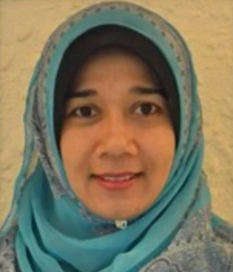Author Guidelines
A. General Instructions
Format & Originality: Articles must be written in accordance with scientific journal writing conventions. Articles must be original work, free from plagiarism, and have not been previously published in any print or online journal. Concurrent submission of articles to other journals during the review, editing, or after publication in Theologia is prohibited.
Submission: Articles may only be submitted through the Open Journal Systems (OJS) platform at https://journal.walisongo.ac.id/index.php/teologia/about/submissions.
Technical Format:
Font & Spacing: Cambria, 10.5 pt font, with 1.15 line spacing.
Document: Microsoft Word format (.doc or .docx).
Page Size: A4 (210 x 297 mm).
Manuscript Length: 5,000 to 10,000 words.
Language: Articles are written in grammatically correct English. The past tense is generally used to report research.
Reference Management: Citation and bibliography must be done automatically using Mendeley's reference manager in the American Psychological Association (APA) 7th Edition style.
B. Particular Instructions
- Article Title: The title should be short, concise, informative, and directly reflect the main content of the research. The ideal length is 10–15 words, or a maximum of 20 words (approximately 150 characters including spaces). Use specific words that highlight the main variables, population, location, or research methods. Avoid titles that are too general, exaggerated, or clickbait-like. Write in sentence case (capitalize only the first letter of the main word) unless the journal requires title case. Avoid abbreviations, chemical formulas, or unfamiliar jargon to facilitate searches in academic search engines. A good title enhances the article's citation and indexing.
- Author Names and Institutional Affiliations: List the full names of all authors without academic titles unless requested by the journal. The order of authorship reflects the extent of their contributions (the first author is usually the largest contributor). Use superscript numbers (¹, ², ³) or symbols to link each author to their affiliation. Write affiliations hierarchically and completely: Study Program/Department → Faculty → University/Institution → City → Country. Include the email address of the corresponding author responsible for responding to reviewers and readers. Correct and complete writing facilitates indexing in Scopus, Web of Science, and Google Scholar and demonstrates professionalism.
- Abstract: The abstract is a self-contained summary of 150–250 words in one paragraph without subheadings (unless the journal requires a structured abstract). Include, in sequence: a brief background and research problem, objectives, main methods (design, samples, analysis), significant findings/novelties, and contributions. Use consistent active or passive language, and avoid unexplained quotations, tables, figures, and abbreviations. A good abstract determines whether readers will continue reading the full text.
- Keywords: 5–6 keywords, written directly below the abstract, prefixed with "Keywords." Choose terms or phrases that are most representative, frequently searched, and distinct from words already appearing in the title. Use standard terminology appropriate to your field of study to make it easier to find in databases like Scopus, PubMed, or Google Scholar. Use lowercase letters except for special names, separated by semicolons or commas. Appropriate keywords significantly increase an article's visibility, downloads, and citations.
-
Introduction. This section serves as an entry point, allowing readers to immediately understand why your research is important and worth reading. It consists of four consecutive paragraphs that reinforce each other:
- Paragraph 1 explains a social fact or current phenomenon in society (for example, the rise of personal interpretations on social media, changes in the understanding of monotheism among millennials, or the community's response to contemporary issues). Here, you demonstrate the social relevance and urgency of the problem.
- Paragraph 2 discusses the literature: what experts have said and where the research gaps, debates, or unresolved contradictions lie.
- Paragraph 3 explicitly states the research objectives and the research questions to be answered.
- Paragraph 4 presents your main thesis or central argument—this serves as the thread throughout the article. -
Literature Review. This section is not simply a collection of book summaries but rather a solid theoretical framework for your analysis. Consists of three interrelated subsections:
- Subsection 2.1 explains the theological or philosophical concepts of Islam that serve as the main foundation (e.g., Al-Ghazali's understanding of faith, the concept of revelation, or the maqasid of sharia).
- Subsection 2.2 discusses the methodological or hermeneutical approach you used (e.g., thematic interpretation, semiotic analysis, or a historical-critical approach).
- Subsection 2.3 reviews relevant empirical studies or previous research and positions your research within them. Each subsection must contain a critical synthesis and a clear connection to the research question. -
Methods. This section details the "how" of your research so that others can replicate it with similar results. Consists of five consecutive paragraphs:
- Paragraph 1 describes the material object (what is being studied: a specific Quranic text, the thoughts of a mutakallim, the phenomenon of digital religiosity, etc.).
- Paragraph 2 explains the research design (qualitative, philosophical, literature review, content analysis, etc.) and the rationale for its selection.
- Paragraph 3 outlines the primary and secondary data sources, along with their respective selection criteria.
- Paragraph 4 outlines the data collection techniques in a procedural and step-by-step manner.
- Paragraph 5 describes the data analysis techniques and their operational stages (e.g., Miles-Huberman thematic analysis, Fairclough discourse analysis, or a philosophical-critical approach). -
Results
This section presents the findings objectively without interpretation. It consists of 3–4 systematic subsections, for example:4.1 characteristics of the text or data analyzed,
4.2 main themes or categories that emerged,
4.3 patterns, relationships, or trends found.
Use tables, graphs, and direct quotations sparingly so that readers can “see” your evidence for themselves. -
Discussion. This section is the “soul” of the article because it is where you transform the data into scientific meaning. It consists of five paragraphs:
Paragraph 1 summarizes the most important findings.
Paragraph 2 relates the findings back to the social phenomenon introduced in the beginning.
Paragraph 3 presents an in-depth interpretation that draws on the theories presented in the literature review.Paragraph 4 compares your results with previous research (similar, different, or complementary).
Paragraph 5 explains the theoretical, practical, social, or religious implications of the entire argument. -
Conclusion. A strong and comprehensive conclusion consisting of three paragraphs:
Paragraph 1 restates the answer to the research question using language that has been enriched by the discussion.
Paragraph 2 emphasizes the original contribution of your research to the development of science.
Paragraph 3 offers specific and realistic suggestions for further research, grounded in limitations or new findings. -
References. Contain a minimum of 50 references, predominantly journal articles from the last 10 years and relevant Arabic/classical primary sources. Use the APA 7th Edition style, arrange entries alphabetically, and generate them automatically with Mendeley Reference Manager.
Submission Notes (Double-Blind Review)
The uploaded manuscript file must not contain author names, affiliations, acknowledgments, or any other identifying information. Author information should be entered separately in the OJS system, and an active mobile phone number should be included in the metadata.




















